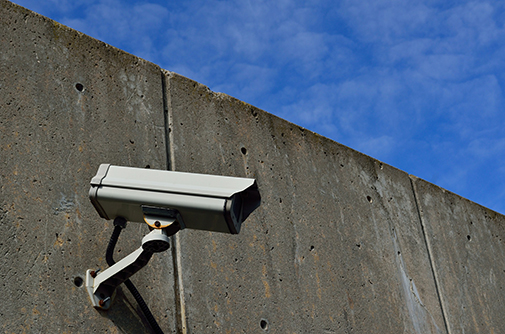Combining multiple CCTV images could help catch suspects
Posted on 24 September 2018

The study has shown that there is a relatively quick and easy way to improve pixelated images of someone’s face
Psychologists, from the universities of York and Lincoln, and the University of New South Wales in Australia, created a series of pictures using a "face averaging" technique.
The method digitally combines multiple images into a single enhanced image, removing variants such as head angles or lighting so that only features that indicate the identity of the person remain.
Digital snapshot
They compared how effectively humans and computer facial recognition systems could identify people from high quality images, pixelated images, and face averages. The results showed that both people and computer systems were better at identifying a face when viewing an average image that combined multiple pixelated images, compared to the original poor-quality images.
Computer systems benefited from averaging together multiple images that were already high in quality, and in some cases reached 100 per cent accurate face recognition.
The results have implications for law enforcement and security agencies, where low quality, pixelated images are often the only pictures of suspects available to use in investigations. The image averaging method offers a standardised way of using images captured from multiple CCTV cameras to create a digital snapshot which can be better recognised by both people and computer software systems.
Accuracy
Dr Rob Jenkins from the Department of Psychology at the University of York, said: “We’re always looking for clever ways to improve image analysis. Sometimes that means smarter analysis. Here we’re using a smarter image.”
In the study, participants were asked to compare a high quality image with either a low quality pixelated image or one created using the image averaging method, and determine whether they depicted the same person or two different people. Results showed that accuracy was significantly higher when viewing an average combining pixelated images, rather than a single pixelated image.
The same test images were run through two separate computer recognition programmes, one a smart phone application, and the other a commercial facial recognition system widely used in forensic settings. Both computerised systems showed higher levels of accuracy in identifying a person from average images.
Explore more news

Climate change set to take over as key driver of biodiversity loss by 2050, experts warn
Thursday 25 April 2024

Conservation actions are effective at halting and reversing biodiversity loss, study reveals
Thursday 25 April 2024

More than a quarter of people with Covid infection develop Long Covid, new research reveals
Thursday 25 April 2024
.jpg)
University of York awarded £1.1 million to lead the first stage of UK’s first comprehensive study on devolution and social security
Thursday 25 April 2024

More hybrid and nature-based solutions are urgently need to protect coastal communities from climate change
Wednesday 24 April 2024
Media enquiries
About this research
Enhancing CCTV: Averages improve face identification from poor‐quality images is published in Applied Cognitive Psychology.
Explore our research.
